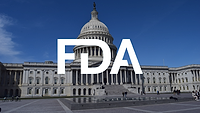FDA Webinar Informs Stakeholders about Action Levels for Lead in Baby Foods

Credit: U.S. Food and Drug Administration (FDA)
On March 2, 2023, the U.S. Food and Drug Administration (FDA) held a webinar to provide an overview of recently established action levels for lead in food intended for babies and children, as well as to answer stakeholder questions. The action levels were set out in a draft guidance, titled, Action Levels for Lead in Food Intended for Babies and Young Children, in January 2023, in support of FDA’s Closer to Zero initiative.
Susan Mayne, Ph.D., Director of the Center for Food Safety and Applied Nutrition (CFSAN) at FDA, opened the webinar by reminding stakeholders that, while it is not possible to entirely eliminate toxic heavy metals of concern—lead, arsenic, cadmium, and mercury—from foods due to their natural presence in the environment, FDA and industry can work towards continual reduction over time. The agency considers the action levels established in the draft guidance achievable when industry takes the required control measures. FDA estimates that the action levels will result in a 24–27 percent reduction in exposure to lead among babies and young children.
Paul South, Ph.D., Director in the Office of Food Safety at FDA’s CFSAN provided an overview of the draft guidance and FDA’s rationale in setting the action levels. He explained that the action levels reflect levels of lead at which FDA may consider a food to be adulterated. Although not binding, FDA can reference proposed action levels when considering whether to bring enforcement action in a particular case.
Dr. South explained the approach that FDA takes for decreasing exposure to toxic elements from foods. Specifically, the agency follows a cycle of continual improvement, in which FDA will 1) propose draft action levels; 2) consult with stakeholders; 3) finalize action levels; 4) evaluate the latest science, and 5) repeat the cycle. Ongoing monitoring, research, and compliance activities are to be continuously conducted.
FDA examined data from the Toxic Element Program, FDA surveys, the Total Diet Study; conducted exposure assessment; and conducted an achievability assessment when drafting the action levels. According to Dr. South, FDA proposed a higher draft action level for single-ingredient root vegetables and dry infant cereals to minimize significant exposure to lead while still considering achievability. The draft guidance sets the following action levels:
- 10 parts per billion (ppb) for fruits, vegetables (excluding single-ingredient root vegetables), mixtures (including grain and meat-based mixtures), yogurts, custards and puddings, and single-ingredient meats
- 20 ppb for single ingredient root vegetables
- 20 ppb for dry cereals.
The webinar discussed how industry can go about reducing lead in food products, such as by peeling root vegetables, washing fruits and vegetables, sourcing foods and ingredients with the lowest possible levels of lead, testing ingredients or finished products for lead, and examining facilities and equipment to ensure they are not contributing to lead in products. In response to a stakeholder question, it was explained that FDA will continually monitor the level of lead in the U.S. food supply through Total Diet Study testing, and that the agency also plans to execute some type of routine surveillance of industry through product testing and inspections.
Conrad Choiniere, Ph.D., Director of the Office of Analytics and Outreach at CFSAN provided greater context for the action levels within the Closer to Zero initiative, and provided updates on the work FDA has undergone to reduce young children’s exposure to toxic heavy metals. FDA has been conducting research in collaboration with government partners on inorganic arsenic and cadmium, and it is expected that draft guidances on action levels for these substances will be released in 2024. The agency is also studying children’s exposure to mercury through seafood, and FDA expect the research to conclude in early 2024.
Dr. Choiniere also mentioned a recent workshop FDA hosted with the National Institutes of Health’s (NIH) on research in risk communication, environmental contaminants in food, and the role of nutrition as they relate to child development. He mentions that more workshops are planned for the future. Finally, FDA recently updated its webpage on the Closer to Zero initiative, including detailed information about the agency’s work in this area and data on lead, mercury, arsenic, and cadmium.
In response to a stakeholder question, Dr. Choiniere revealed that FDA will be assessing whether to set action levels for foods that are not intended for babies and young children but are commonly consumed by them, as well as for infant formula. For now, however, the agency is focusing on specific foods intended for babies and young children.
FDA asks stakeholders to submit written or electronic comments by March 27, 2023. Submit comments electronically on Regulations.gov to docket number FDA-2022-D-0278. Submit written submissions to: Dockets Management Staff (HFA-305), Food and Drug Administration, 5630 Fishers Lane, Room 1061, Rockville, MD 20852. All submissions received must include the Docket No. FDA-2022-D-0278 for Action Levels for Lead in Food Intended for Babies and Young Children: Draft Guidance for Industry.
Looking for a reprint of this article?
From high-res PDFs to custom plaques, order your copy today!






